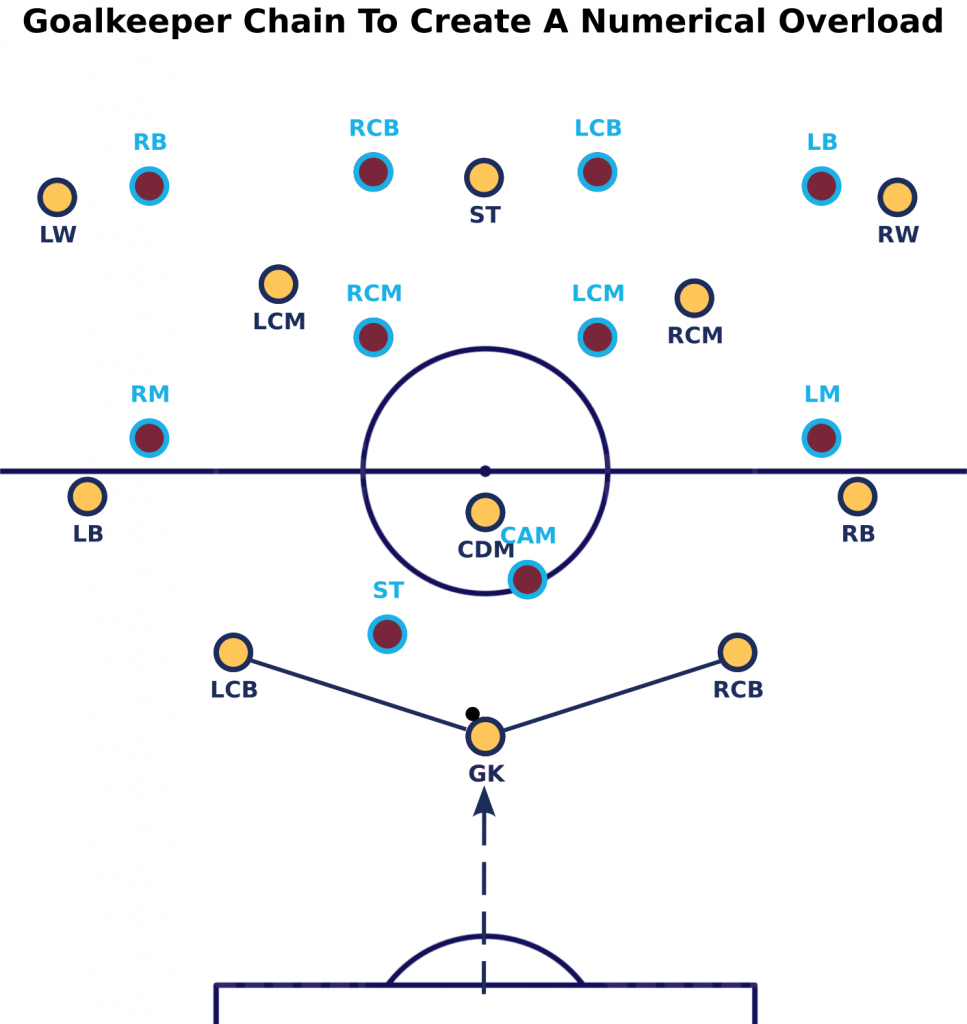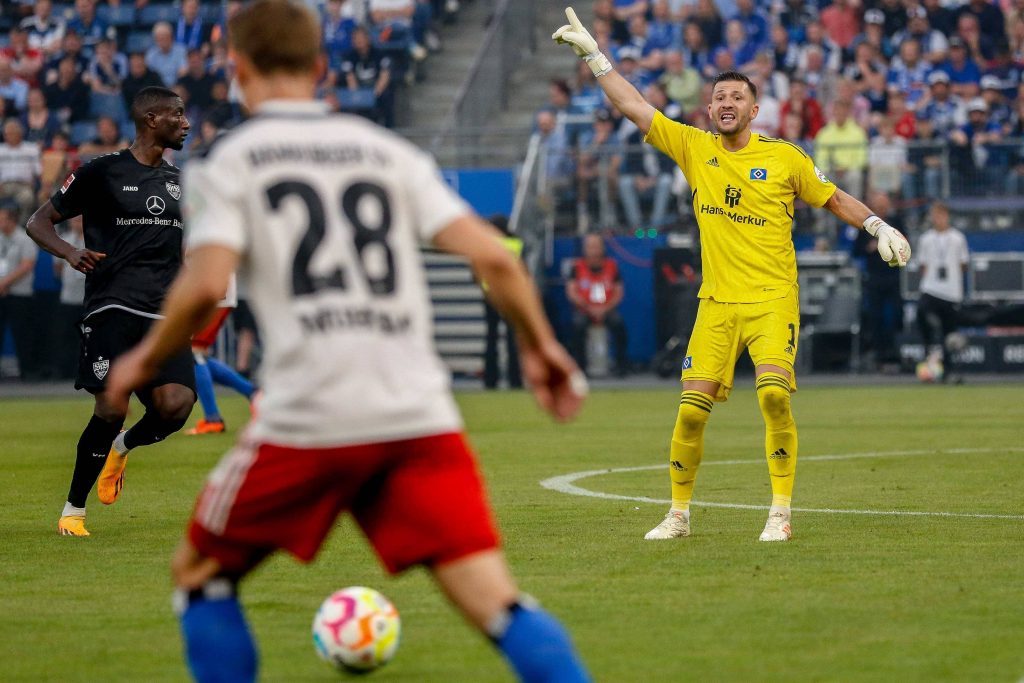Neel Shelat introduces the concept and asks why it has become vogue in some tactical set ups
The field of football tactics is constantly evolving, as is very well chronicled in Jonathan Wilson’s book “Inverting the pyramid: The history of soccer tactics”. The book – an absolute must-read for anyone with the slightest interest in football tactics – explores this evolution not just from a sporting point of view but also in broader contexts by discussing the popular formations and tactics in different regions and time periods as well as the factors that led to their genesis and spread.
These factors can be far-reaching like social or political ones, or more immediately impactful ones like other tactical developments or changes to the rules of the game. A great example of the latter is the introduction of the back-pass rule in the early 1990s which ultimately forced goalkeepers to become more comfortable at playing with the ball at their feet as they were prevented from handling intentional passes from teammates. As a result of this, about three decades later, almost every goalkeeper around seems extremely comfortable with the ball at their feet. This is the first major factor that has created conditions conducive to the emergence of goalkeeper chains.
Another relevant tactical development is the increasing prevalence of the mid block. Especially against elite teams, others have realised that pressing high can be a futile exercise when facing a team full of gifted technicians who can easily play through them, especially thanks to the numerical advantage they are forced to use as their goalkeeper is involved in the build-up too. In order to avoid this, many teams tend to settle in a mid block out of possession and invite the opposition to break them down.
At the most basic level, the challenge for the team in possession is to find a crack in the opponents’ defensive structure in a 10v10 situation since only all of the outfielders get involved in the middle of the pitch. Of course, this is far from impossible thanks to individual player quality and/or tactical adjustments, but there is a simple way for the team in possession to gain the most significant type of advantage – a numerical advantage. All they have to do is push their goalkeeper up; it is that simple!
And, there is a name for this concept. Between The Posts defined the term ‘goalkeeper chain’ as “a buildup mechanism where the goalkeeper essentially functions like a member of the backline and stands in line with the central defenders”. Well before that, then-analyst and now-coach René Mari? wrote an in-depth piece titled “Die Torwartkette” in which he effectively created the term goalkeeper chain (which is a literal translation of “Torwartkette”) but more pertinently explored some examples of teams using goalkeeper chains and then theorised what wider implementations might look like.
Mari? divided his piece into two main sections, one focusing on what he called the “deep goalkeeper chain” and the other on the “medium and high goalkeeper chain”. He used most of his practical examples in the former, which simply refers to goalkeepers being involved in their team’s build-up from their own box while playing out from the back against a high block or press. Of course, we see those on a day-to-day basis now, so that is nothing groundbreaking.
What we are more interested in is the medium and high chain where the goalkeeper moves outside their box at the very least, which is what we are really referring to when we say ‘goalkeeper chain’ at this point. This is what such a goalkeeper chain might look like:

On a very simplistic level, the advantage of such a goalkeeper chain is quite evident. In the above instance, the side in possession is able to generate a 3v2 numerical advantage in the first line of their build-up structure by using a goalkeeper chain. This enables them to progress the ball forward with much more ease as they can utilise the time and space available to the free player.
Goalkeeper chains have perhaps not been seen as widely as Mari? might have envisioned at the time he worked on that piece, but they have spread around a fair bit. At the time of writing, there have been instances of teams using goalkeeper chains across various leagues and continents, including in Germany, Türkiye, South Africa, Mexico and Australia.
Given the now widespread nature of goalkeeper chains, it becomes important to find a way to identify teams using them through data analysis rather than having to watch every single game. A simple method would be to focus on goalkeepers’ open-play passes/receptions outside their box, which should directly highlight teams that use goalkeeper chains. A recent Twitter thread by Soccerment did so:
How has goalkeeper distribution evolved recently, particularly in terms of passes played from outside the penalty box? Let's dive into a long ??
— Soccerment (@Soccerment_Blog) March 23, 2023
Here is how the start location of open-play GK passes has changed in the past six seasons in the top 5 leagues pic.twitter.com/7ew4JzNssk
The findings of their analysis are quite interesting. There has been a clear uptick in goalkeeper passing from outside the box, which suggests that goalkeeper chains are growing in popularity. In the big five leagues, the German Bundesliga has been leading the way by some margin over the last few years. Further, the only three goalkeepers (from Soccerment’s selection of 20 leagues) who play more open-play passes from outside the box than inside it all ply their trade in Germany. If we drop down to the 2. Bundesliga, we find that two-thirds of the league’s goalkeepers have played over 30% of their open-play passes from outside the box this season!
Agreed! Here it is ? 12/18 teams with >30% of open-play GK passes from outside the box, overall league average value 38.6% ? pic.twitter.com/rvZnXzKpXH
— Soccerment (@Soccerment_Blog) March 23, 2023
This naturally begs the question: why do goalkeeper chains seem to be so popular in Germany? Analysts have theorised that the emphasis placed on counterpressing in German football created conditions conducive to the emergence of goalkeeper chains. The reason goalkeeper chains are linked with counterpressing has to do with the biggest risk involved in implementing them, so let us address the elephant in the room now.
That, of course, is the possibility of leaving an open goal exposed in case of a turnover. As goalkeepers often come as far out as the edge of the defensive third to create a medium goalkeeper chain, they find themselves a fair few seconds away from their goal even if they run back at full tilt. That is more than enough time for a professional footballer of any description to control the ball and attempt a shot with a good deal of accuracy, so conceding immediately after a turnover is a real risk.
Obviously, the best way to avoid this is to simply not lose the ball in a dangerous position, especially right in front of the goalkeeper chain. Therefore, it is imperative to have a goalkeeper who is very comfortable and secure with the ball at their feet. Thankfully, such goalkeepers can be spotted all over the place right now, but just being a secure passer is not enough to successfully implement a goalkeeper chain – the goalkeeper must be comfortable playing far away from their goal too.
This mental aspect is something that goes against a lifetime’s worth of learning and experiences for most players, so it is an important aspect to consider. Goalkeeper coach Robert Matosevic, who implemented a version of goalkeeper chains during his time in Adelaide United’s youth setup, gave a very interesting interview where he spoke of the importance of developing the right “mindset” for implementing goalkeeper chains. When asked how this can be done, he said, “I think the best way to achieve it is through trust. This includes trust in that the goalkeeper trusts the other players not to lose possession; trust from team-mates in their goalkeeper when they play a pass into him when he is in a position to receive, and most of all, trust in the coaches (i.e. me!) that they (the coaches) will take full responsibility if something goes wrong.”
Even after ensuring all of this, it remains unrealistic to expect that the ball is never lost in a position that can be deemed dangerous to some degree. Therefore, a contingency plan must be formulated to ensure that needless goals are not conceded. This is where counterpressing comes into the picture – not necessarily to win the ball back, but as a defensive strategy. By applying pressure on the ball immediately after it is lost, the goalkeeper’s teammates can (at the very least) buy them enough time to get back in position by preventing the opposition from getting the time to look up, take aim and shoot.
Having considered all of this, the big question is whether the benefits of implementing goalkeeper chains outweigh the risks involved. All indications are that the answer is affirmative. Recent research on goalkeeper passing on the site found that teams that tend to involve their goalkeeper more have greater ball retention and manage to generate greater attacking threat after such sequences. It should be noted that there are other factors that influence these metrics – most prominently the team’s style of play. Of course, this is something that teams must consider before deciding if they want to use goalkeeper chains. For instance, it would not make a lot of sense to implement goalkeeper chains while playing a very direct style of football.
On the whole, though, it seems quite clear that the pros outweigh the potential cons of using goalkeeper chains. All over the world, there are a lot of teams that would benefit from implementing them, yet outside of Germany we can only see one or two teams per league that use them. In that sense, the idea of goalkeeper chains is still in a pretty nascent stage, but even so, we are already starting to see a fair bit of variation.
So, the next piece on goalkeeper chains on the site will take a more in-depth look at current implementations, focusing on various formations, goalkeeper roles and playing styles that we can currently see. Hopefully, that should convince more people to hop aboard the goalkeeper chains hypetrain!
Header image copyright IMAGO / Oliver Ruhnke














